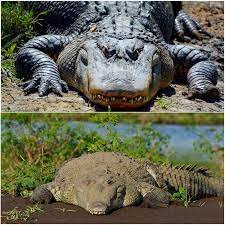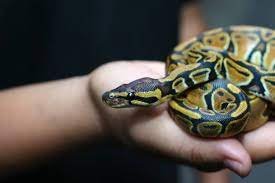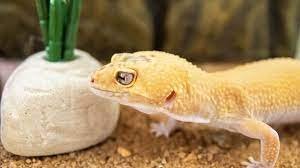To put it simply, reptiles can’t control their own body temperature because they are cold-blooded. Reptiles spend most of their time in warm areas, lounging on rocks or enjoying the sun, because they cannot control or maintain their body temperature. In order to survive the winter, these creatures must either hibernate or find a warm location to burrow or hide. If exposed to cold for a short period of time, some reptiles can enter a condition that slows down their metabolism, allowing them to survive.
Scientific moment: In contrast, humans are an example of warm-blooded species that are able to maintain a steady body temperature by generating heat through the digestion of food.
Dry, scaly skin is a common trait among reptiles. In the animal kingdom, reptiles include such diverse creatures as turtles, crocodiles, lizards, and snakes. All of these animals are reptiles, yet some of them (like crocodilians) are more closely related to birds than to lizards or any other reptiles. What a peculiar thing!
19 Things About Reptiles That You Probably Didn’t Know
The majority of reptiles have poor chewing abilities

It’s shocking, but it’s real! Reptiles have sharp teeth and claws that they use to rip and tear prey apart, but they don’t chew their food the way we do. Reptiles have evolved a less than the optimal method of digestion, but it serves their needs.
Lizards, Turtles, Alligators, Crocodiles, and Snakes are all members of the Reptile Family
Lizards, turtles, crocodilians (such as alligators, crocodiles, and gharials), and snakes are all examples of reptiles, a class of creatures that live on land. A lot of reptiles don’t have a warm-blooded system.
Most reptiles are cold-blooded
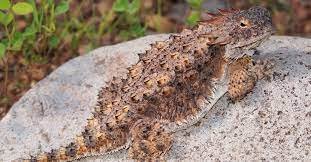
Don’t consider this as proof that they’re emotionless or intentionally cruel, as is the popular interpretation. This time the phrase means what it says on the tin; reptiles have cold blood, at least to some extent. Unlike mammals, such as humans, reptiles’ body temperatures fluctuate in response to their environments. It stands to reason that a reptile would feel hot in a warm environment and chilled in a cool one. In contrast to humans, who must convert food to energy in order to keep warm, reptiles don’t have this requirement, therefore they can get by on much less food; for instance, certain snakes can go five or six months without eating.
Also, know What Do Peregrine Falcons Eat?
Scales Are Found on Every Reptile
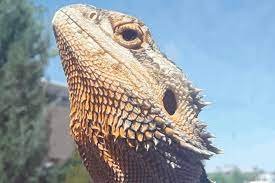
Even though modern reptiles have undergone extensive evolutionary changes, all living species still retain scales. Similar to how hair and feathers are created, scales are composed of keratin. Protection from the sun’s rays and abrasion from other creatures’ teeth and claws are only two of the many benefits these scales provide to their reptilian hosts.
In addition to their distinctive scales, all reptiles have a lot of characteristics
All over their bodies are strong, sturdy scales. The scales on their outer skin keep them from drying out and shield them from the elements and potential dangers like the sun and predators.
The calcium layer of a reptile’s shell can be firm or leathery, depending on the species

The hearts of all reptiles have either three or four chambers. Tri-chambered hearts are typical of reptiles and are seen in lizards, snakes, and turtles (two atria and one ventricle). All crocodiles, like all reptiles, have four chambers in their hearts (two atria and two ventricles).
Crocodiles’ jaws are a major source of heat loss
Although it’s not entirely accurate, crocodiles do use their jaws as a means of keeping cool. Since crocodiles lack the sweat glands that allow humans to cool down through perspiration, they must instead vent their body heat through their mouths. Pictures of crocodiles lounging with their mouths open often show them doing so to reduce body temperature. Crocodiles, like dogs, can pant to cool themselves, but you still shouldn’t try to take one on a stroll.
Reptiles are some of the oldest living creatures

Among the oldest species on Earth are the reptiles, which have been present for almost 200 million years. There are reptiles that have been around since the time of the dinosaurs. About 245 million years ago, crocodiles initially appeared on Earth, making them approximately 15 million years older than dinosaurs. Certainly, these species have progressed through the ages. The longest crocodiles of today are just about 20 feet long, but back then they could grow to exceed 31 feet.
Almost every reptile species produces an egg with a protective shell
Most reptiles, as you probably already know, reproduce asexually by laying eggs, like birds do, rather than by giving birth to live young. While most reptiles lay eggs and hatch their young, some do give birth to live young. Two variations on this theme exist, one in which the reptile carries the egg inside its body and the other in which the reptile uses placenta-like mammals to give nutrition to the developing embryo. Native to the United Kingdom is the Adder, a medium-sized venomous snake found all over the world. The Skink, a kind of tiny lizard, also gives birth to live offspring. This is useful information if you’ve ever considered trying to track down some Adder’s Eggs to complement your Sunday breakfast hash.
All continents except Antarctica have reptiles

Reptiles have long been associated with the mysterious and faraway. However, reptiles are incredibly versatile and can be found in every ecosystem on Earth. Creatures that have been around for nearly 250 million years must have developed the ability to adapt to various environments. Although reptiles can be found in many different environments, they cannot survive in Antarctica due to the intense cold.
Compared to other animals, reptiles tend to have longer lifespans
Reptiles are some of the longest-living species on the planet. The average lifespan of a Giant Tortoise is roughly 150 years, however, some individuals have been recorded living well into their 200s.
Over 10,000 distinct reptile species have been identified

Scientists have identified more than 10,000 different kinds of reptiles around the globe. Therefore, they have more species than mammals and amphibians combined. Deserts, oceans, and urban areas are all suitable environments for them, and they may be found on every continent except Antarctica.
If a chameleon wanted to blend in, it wouldn’t change its color
The idea that chameleons can alter their color to blend in with their environment is widely believed. Although it would be wonderful if they did, that is not the reason their colors shift. Rather, it depends on how they feel at the time. An anxious or furious chameleon will display vivid patterns and hues. So, if you want to see a chameleon’s color changing as a pet, you could be a little letdown.
The tongue is used for a scent by snakes and lizards

Snakes and lizards do not use their noses for the smell. Although they do have mouths, most of their breathing occurs through their noses. They use a tongue flick and a device known as Jacobson’s Organ to pick up odors. By doing so, the snake or lizard learns how to respond appropriately depending on the chemicals it detects with its tongue. It’s been observed that some snakes can detect pheromones in the air and use this information to find a partner; I’m not convinced that this method would work for humans on the draw.
The longest known reptile is the reticulated python
The reticulated python is the longest-living species of snake, outliving even the saltwater crocodile. One reticulated python discovered in Indonesia in 1912 measured 32 feet, setting a new world record. Even though they became extinct 65 million years ago, the titanosaurs are credited with being the longest reptiles yet discovered. Experts believe the Argentinosaurus, with an estimated 130 feet in length, was the biggest dinosaur ever.
Herps and other reptiles are not slimy; in fact, they are quite dry
Another mistaken belief is that all reptiles are slimy. However, reptiles can’t get slimy because they don’t have sweat glands. They’re not slimy, but rather exceedingly dry and scaly.
Numerous lizards experience tail amputations

Quite a few different types of lizards shed their tails and then grow them again as a means of self-defense. It is crucial to remember, though, that the new tail will never be an exact replica of the previous one. In the wild, this protection mechanism helps them escape if a predator grabs hold of their tail.
Turtles and tortoises have the longest lifespans among reptiles
Tortoises have the longest lifespan of any reptile. Jonathan, an Aldabra tortoise, has been alive for 189 years, making him the oldest living land animal. Even for a tortoise, 180 years is an exceptionally lengthy existence. However, numerous species often live to be 80 or beyond. As a result of their low metabolic rates, sturdy exteriors, and general lack of health issues, they are able to do this.
Snakes pose no threat to human health

Even though snake phobia is so widespread, most snakes are actually rather harmless unless you happen to be living in Australia. Only around one-third of the world’s snakes are venomous, and only about eight percent are considered to be truly dangerous to people. That doesn’t imply you have to warm up to snakes, but it does suggest that your fears may be overblown.
Ectotherms are the norm for reptiles
Animals that are ectotherms are unable to maintain their own internal temperature. Endotherms like mammals and birds are able to maintain their body temperature independently of the ambient temperature. Ectothermic describes the body temperature of reptiles. That’s why reptiles slow down in the winter and seek out sunbathing. Because of the low temperatures, they are unable to move swiftly or even digest their meal.
Many reptiles are vegetarian or vegan

It’s a popular misconception that reptiles of all types have the same diet.
Both crocodiles and snakes are strict carnivores, subsisting solely on the flesh and eggs of other species. Most turtles and tortoises are both herbivores and carnivores, feeding on a variety of plant matter as well as insects and other small animals. Lizards are a diverse group that eats mostly insects and sometimes plants. Some lizards, like leopard geckos and fence lizards, are strictly insectivorous and won’t touch a plant, while others, like bearded dragons and iguanas, will happily munch on fresh produce.
The 21st of October is recognized as Reptile Awareness Day
The purpose of the annual Reptile Awareness Day is to get people thinking about the preservation, education, diversity, and significance of reptiles. Humans and their activities pose the greatest threat to reptiles because of the degradation of their habitats. To observe Reptile Awareness Day, you can go to a local zoo or park to learn about local reptiles and perhaps even see some in person.


